






HORTICULTURE NEW Zealand
says an outbreak of fruit fly could have significant impacts for the horticulture sector.
Kate Scott, chief executive of HortNZ, says immediate impacts may include restrictions on the movement of fresh produce from affected areas, increased compliance requirements, and potential market access challenges for exporters.
“It would affect growers’ livelihoods, disrupt domestic and international supply chains, and require extensive eradication efforts. That’s why early detection and a rapid response are critical,” Scott told Rural News
Her comments follow the discovery of an Oriental fruit fly in the Mangere/Papatoetoe area of Auckland earlier this month.
The discovery led to a Controlled Area Notice being placed on the area and increased trapping.
At the time of writing, no further fruit flies had been found in the area.
“New Zealand has a world-class biosecurity system, and previous responses have successfully eradicated fruit fly incursions before they could establish,” Scott says.
“Protecting the horticulture sector from biosecurity threats like the fruit fly is critical to the country’s economy and reputation
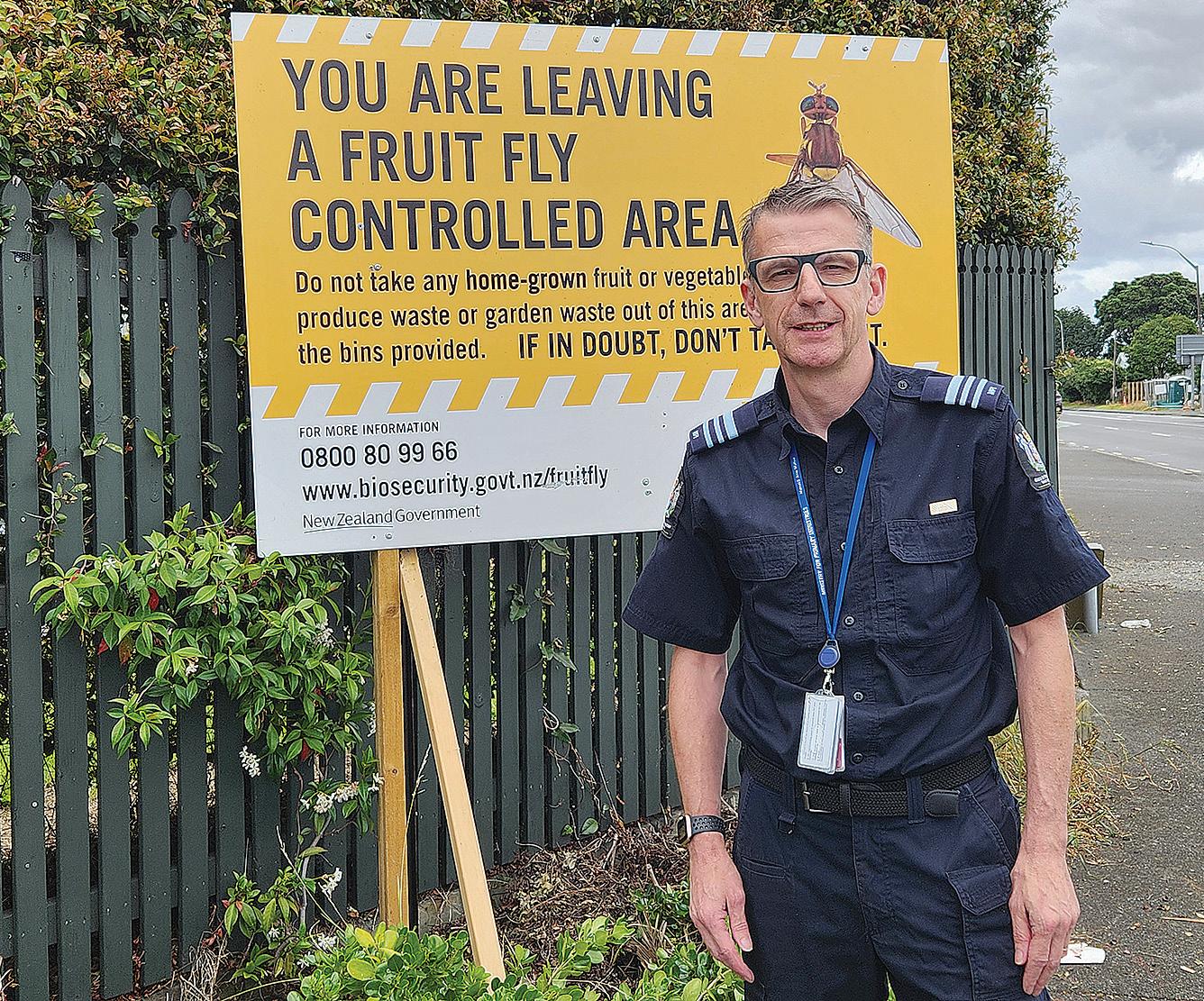
as a producer of high-quality produce,” she adds.
HortNZ is working with Biosecurity New Zealand and directly involved in decision-making and response efforts.
“Our priority is to support the
response and ensure that growers have the latest information,” Scott says.
Mike Inglis, Biosecurity New Zealand commissioner, north, says the Ministry for Primary Industries (MPI) has more than 150 staff
working on the response, including a large on the ground presence.
“Our staff have been out and about putting in extra fruit fly traps and upping checks of them, collecting fruit samples for checking at our mobile laboratory, and
providing information to residents and visiting businesses in the area to explain what the restrictions mean for them,” Inglis told Rural News
“Residents in the two zones are being asked to put fruit and vegetable waste into the special response bins for Biosecurity New Zealand to dispose of securely,” Inglis explains. “Every household in Zone A has a bin, and in Zone B, bins are placed around the edge of the zone, primarily on major transport routes, plus additional bins within the zone.
“We want to thank the local community for their positive response to our team so far,” he says.
Inglis says Biosecurity New Zealand has various measures in place to keep out the 20 fruit fly species considered to be serious pests, including strict import health standards and thorough checks of imports and passengers and their luggage arriving in New Zealand.
“However, we know that fruit flies can still accidentally be brought in by passengers arriving from overseas and on imported fruit and vegetables,” he says.
MPI has information about the restrictions imposed on the two zones, translated into multiple languages at https://www.mpi.govt. nz/fruitfly.











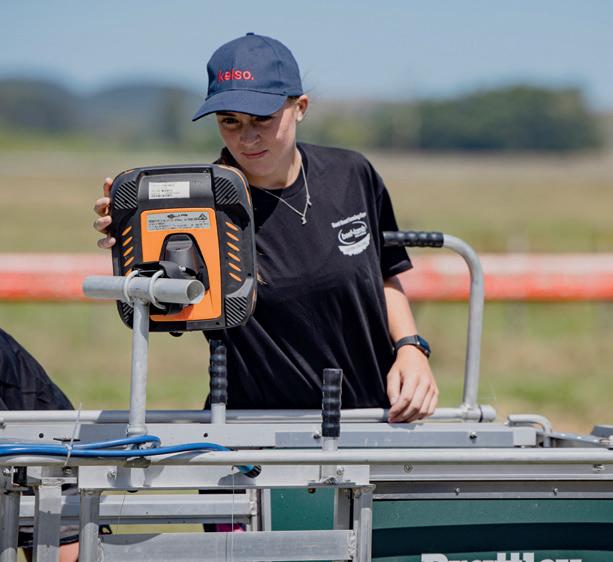





SUDESH KISSUN
sudeshk@ruralnews.co.nz
Phone:
Rural News online: www.ruralnews.co.nz
12
OPINION 12-14
15
17-19
19
Subscriptions: subsrndn@ruralnews.co.nz NEWS 1-10 AGRIBUSINESS 11 HOUND, EDNA 12
CHANGES TO migrant visa settings announced last month should take a lot of pressure off farmers in the new season, says Federated Farmers immigration spokesman Richard McIntyre.
With the new rules coming into effect from March this year, they will have an immediate impact for the new dairy season starting in June.
It should take a lot of pressure off farmers, particularly during those busy times like calving and mating, he says.
“These changes are a huge win for dairy farmers and will make a real difference for those farming families and businesses who have been struggling to find the staff they need,” he told Rural News
“For the last few years, I’ve heard from more farmers than I’d care to count who have been under huge pressure and working some very long hours – sometimes months on end without a day off.
“This has a huge impact on those farmers’ physical and mental health and creates unnecessary animal welfare risks. It also has a lot of flow-on effects too with huge pressure coming on farming families and home life.”
Changes announced by Immigration Minister Erica Stanford just before Christmas include removing the requirement to pay new migrant staff at least the median wage of $31.61/ hour, and extending the duration of visas for ANZSCO level 4 or 5 roles to three years, up from two years plus a one-year extension previously.
The Government has also reduced work experience requirements for skilled migrant staff from three years down to two years, increasing the pool of farm workers who qualify. A 21-day mandatory waiting period has also been removed to improve the speed of processing times.



BUILDING THE farm workforce was one of Federated Farmers’ 12 policy priorities before the 2023 general election, and Richard McIntyre says they’ve been working hard to get these changes over the line.
“In particular, I’m pleased to see the length of visas for ANZSCO level 4 or 5 roles extended to three years, which is something we specifically requested.
“What this means is a staff member can stay in the country for three years on one single visa, instead of needing two visas by the time you apply for the one-year extension.
“This will cut thousands of dollars in costs for farmers, but it will also mean a lot less stress and uncertainty for both the farmer and the employee who just want to get on with their farming.”
Farmers will no longer be stuck in a 21-day waiting period when filling crit-
ical roles, making it far easier and faster to bring in the right people for the job.
Removing the requirement to pay these staff at least the median wage is also a positive change.
“It never made sense to have to pay what are essentially entry-level farming staff the median wage, particularly when that’s more than what a Kiwi in the same role would be earning,” he says.
“Overall, the reforms are a significant step forward and will help ensure farmers have access to the staff we need to run our businesses.
“We’re really pleased that the Minister has heard our concerns and worked with us to find these practical solutions that will make a real difference for farmers. That’s the value of your Federated Farmers membership at work.”
McIntyre says that while the changes won’t resolve all the staffing issues faced on dairy farms, they would go a long way to help farmers.
DairyNZ data shows that 16% of farms didn’t have enough staff to meet their needs.
McIntyre points out that during the Covid-19 years when borders were closed, the dairy workforce shortage peaked somewhere between 4000 and 6000 workers.
“We’ve likely come back slightly from those levels, and numbers will fluctuate from year to year, but can’t hide from the fact we still have persistent gaps in our farming workforce that need to be addressed.
“While these changes will by no means be a silver bullet for all our workforce needs, they will certainly go a long way in cutting out some of the needless cost and delays farmers have been facing.”
• For Water Storage Tanks
• Adjustable levels from 50mm-2.5m
• Minimises pump operation
•Available in 20/25/32/50mm



• Stainless steel bracket and Shaft
• Fits plastic and concrete tanks
• Rugged and long lasting

SUDESH KISSUN sudeshk@ruralnews.co.nz
GLOBAL BEEF supply will contract this year for the first time since the Covid19 pandemic, according to Rabobank.
This could translate into higher prices for New Zealand beef exporters.
The bank’s latest Global Beef Quarterly report, ‘Navigating Declining Global Production’, released last month, says Brazil and the US are likely to lead beef production declines in 2025.
“Reductions in China, Europe, and New Zealand are also likely, and Australia may be the only top-10 beefproducing country to post year-overyear production gains in 2025,” it says.
While North American cattle prices have been high for close to two years because of the lower cattle numbers and strong consumer demand, the report says, some other countries have experienced low cattle prices.
“This trend has started to change as global beef supply declines start to firm up support for cattle prices in South America, Australia and New Zealand.”
With available supplies altered across the top global beef markets, the report says, beef trade is expected to

shift dramatically.
“We anticipate Australian beef producers will increasingly depend on exports to absorb stronger domestic production, while Brazil will see global markets as a better demand opportunity compared to lacklustre domestic demand,” the report says.
It cautions that global beef production has the potential to swing dramatically if weather patterns change.
“US producers are waiting on more dependable precipitation to rebuild the
herd, and Brazilian production is being slowed by rain delaying the supply of cattle fattened on pasture,” it says.
“Australia has maintained relatively adequate precipitation for a few years, but the threat of dryness could lead to more production.”
RaboResearch senior agricultural analyst Jen Corkran says the optimistic outlook for beef in New Zealand could encourage producers to build cattle numbers, leading to a production increase in coming years.

“2024 has seen a 3.7% drop in bobby calf numbers, indicating more dairy beef may be being reared to enter the beef herd,” says Corkran.
Total export volumes for New Zealand beef were down 19% yearon-year for quarter three 2024, while average export values were up by 9% year-on-year across the same period.
Corkran says the overall increase in export value had largely been driven by strong volumes and value for beef exported to the US.
“US beef export values were up by 19% year-on-year for quarter three, averaging $10.56/kg, which is right up there with some of the best export value we’ve seen for New Zealand beef to the US market.
“However, this was partially offset by lower export values to China, which decreased by 5% year-on-year for quarter three to $6.78kg.
“Farmgate pricing across all cohorts of beef cattle was 15% to 19% above fiveyear averages over quarter three, 2024, and this has helped cement beef as the golden goose of red meat exports for New Zealand.”
Looking at the full 2023/24 export season (October 1, 2023 to September 30, 2024) US exports have dominated.
Total US export volumes were up by 9% year-on-year to 181,000 metric tonnes (t), while China volumes dropped by 22% year-on-year to 159,000t.
Corkran says strong volume increases were recorded in secondary markets, with Japan and Canada increasing volumes by 46% and 50% year-on-year to 35,000t and 24,400t respectively.




Biosecurity Act 1993.
THE MINISTRY for Primary Industries (MPI) has received 136 submissions on proposed amendments to the Biosecurity Act.
Submissions closed on December 14 last year and MPI’s chief biosecurity officer Pete Thomson says they are pleased with the level of response and the quality of submissions received.
“The submissions received will be genuinely helpful in the development of final proposals,” Thomson told Rural News
MPI will analyse the submissions before providing advice to the Minister for Biosecurity, Andrew Hoggard.
Thomson says several submitters have indicated they would like to work collaboratively with MPI on suggestions they have made in their submissions as final advice is formulated.
“We are interested to discuss issues further with some submitters, including DairyNZ, and this will be part of the analysis phase,” he says.
Thomson says they hope to provide advice to the Minister in the first half of 2025.
In its submission, DairyNZ wants a more integrated and sustainably funded biosecurity system as part of changes to the
DairyNZ chief executive Campbell Parker says a strong biosecurity system is critical to safeguard and protect the future of New Zealand dairy farming.
“The current system is fragmented and is funded through multiple levies, each with their own legislative provisions and administration,” he says.
“The different programmes often have the same stakeholders involved and this duplication is part of the frustration experienced by dairy farmers.
“We would like to see a more integrated
and sustainably funded biosecurity system that prioritises investment in readiness to make sure we are prepared for any future biosecurity events.”
In its submission, DairyNZ also highlighted the proposed changes to the Government Industry Agreement (GIA) for readiness and response and provided feedback on proposed changes to compensation settings and eligibility under the Act.
“New Zealand needs to invest in appropriate system-wide preparedness for major biosecurity events to reduce the impact on the sector,”
Campbell says.
“Our current Biosecurity Act is over 30 years old, and these new proposed amendments will look to modernise the Act.
“Change is needed and DairyNZ welcomes the opportunity to work with the Government to make sure the voices of dairy farmers are heard.
“We remain focused on talking to our farmers around the country to share updates, information, answer questions, provide examples and represent their views during this important consultation period.”
DAIRYNZ SAYS its levy-paying members invested more than $60 million across the biosecurity system last year, through multiple biosecurity levies across several entities and legislative frameworks to collect this funding.
It points out that this adds unnecessary complexity, administrative cost and a lack of transparency with levy investment in biosecurity for farmers.
“We would like to see a more integrated and sustainably funded biosecurity system for the livestock sector that minimises risks through collective readiness and good biosecurity practices,” it says.
“To support this, our farmers need certainty and consistency of the principles that will be applied to risk management, cost-sharing, and decision-making across the biosecurity system.”
It also notes that delivery of services within the biosecurity system is fragmented, with inconsistent legislative and system settings to support effective funding and delivery.
“Different programmes often have the same stakeholders involved and this contributes to the frustration experienced by dairy farmers about regulatory burden and lack of transparency of levy investment.”
DairyNZ notes that farmers currently fund the biosecurity system through six different levies and with the transition of the Mycoplasma bovis programme to a National Pest Management Plan (NPMP), this increases to seven.
“Dairy farmers may also contribute further funding to the biosecurity system when cattle are designated as beef cattle for slaughter and on the purchase of seed for arable crops.”
It recommends that biosecurity levies consolidated into a single levy (or fewer levies) with the creation of a cross-industry organisation that integrates the delivery, and funding, of biosecurity services would be a more efficient way to recover costs and lessen administrative expense for industry and government.
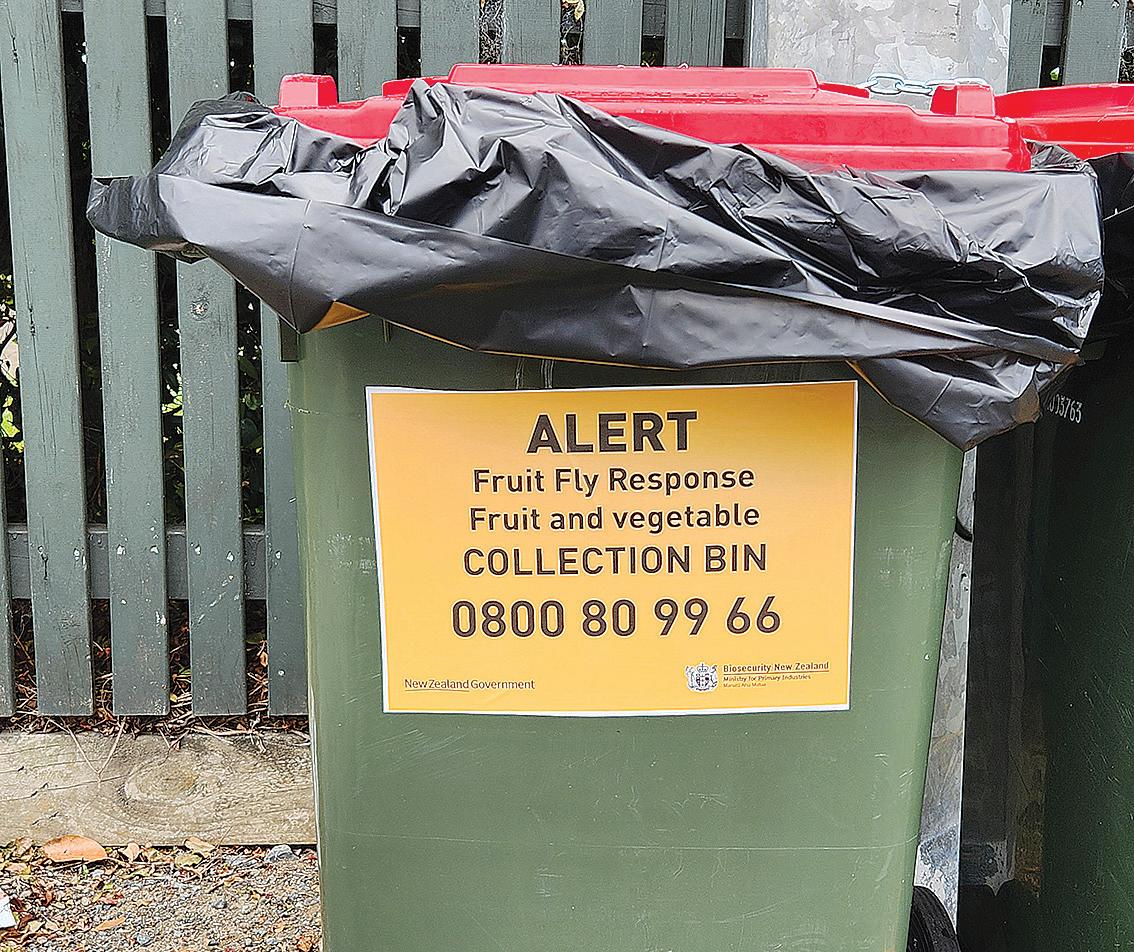


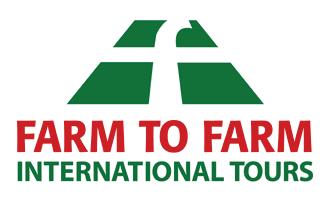

on the NZX.
FONTERRA SHAREHOLDERS’ Fund (FSF) will no longer be listed on the Australian Stock Exchange from the end of next month.
The FSF allows outside investors unable to hold shares in Fonterra to invest in units which have been trading on both the ASX and the NZ Stock Exchange.
However, after completing a review of its equity listings in November last year, Fonterra’s board decided to delist FSF from the ASX to reduce cost and administrative burdens of complying with multiple stock exchanges.
The move comes as Fonterra is going ahead to sell its Oceania consumer business, that includes processing plants and leading consumer brands in Australia.
In an announcement to NZX last week, Fonterra general manager capital markets & investor relations, Philip van Polanen, said that FSF has submitted a formal application to delist from ASX and trade solely
He notes that ASX will agree to the request upon the satisfaction of certain conditions, which FSF intends to satisfy prior to its removal.
Units held geographically in Australia represent 7% of FSF, however, units registered to trade on the ASX is only 4%, with 96% of units registered under the NZX.
Polanen notes that the NZX listing provides sufficient liquidity to unitholders and that consolidating the listing on the NZX would be beneficial to liquidity.
“FSF’s secondary listing on the ASX also imposes additional corporate and administrative costs and compliance obligations, which the Manager considers outweigh the benefits of remaining on the ASX and are no longer in the best interests of FSF’s unitholders.
“We also note that a significant majority of FSF’s unitholders are based in New Zealand.”
Polanen says FSF’s units will no longer be quoted or traded on the ASX, meaning that unitholders will no longer be able to sell their units

and realise their investment in FSF via ASX trading.
Instead, unitholders wishing to sell their units will only be able to do so via the NZX or via off-market private transactions (subject to compliance with New Zealand law) and FSF will no longer be subject to the obligations under the ASX Listing Rules.
At FSF’s annual meeting in November last year, FSF chair Mary Jane Daly told unit holders that Fonterra had consulted with them on the matter.
“And we are supportive of the shift to a single listing for FSF,” Daly told the meeting.
“In addition, advances in global trading technology make it easier for companies to access international investors through a single primary listing.
“Units held geographically in Australia represent 7% of the Fund. However, units registered to trade on the ASX is actually only 4%, with 96% of units registered under the NZX, with several Australian institutions preferring to hold and trade units in the bigger pool of liquidity here in New Zealand.”
If the de-listing goes to plan, the FSF units will be suspended from trading on ASX at the close of trading on Tuesday, February 25. FSF will be removed from official list of the ASX at the close of trading on Thursday, February 27. Friday, February 28 will be the first day FSF units will trade solely on the NZX.

“Broadly speaking, dual listings are becoming less popular due to the increased cost, regulatory complexities, and administrative burdens of complying with multiple exchanges.


PETER BURKE
THE MĀORI agriculture sector is experiencing major growth and the Director General of Ministry for Primary Industries Ray Smith says it’s an area to watch with its value trebling in the past decade.
In the latest MPI report on the situation and outlook for the primary sector, the value of Māori collectives assets has risen from $6 million to $19 billion since 2013. Collectives include Māori trusts, incorporations and iwi-owned commercial arms but does not include the assets of individual Māori who operate in the overall primary sector.
Māori collectives assets in sheep and beef farming increased by $100 million from $7.1 billion in 2018 to $7.2 billion in 2023. Sheep and beef is the biggest single asset class with dairy in second place at $4.4 billion, with forestry and fishing next. But
the biggest growth has come in the horticulture sector at just on $2 billion.
The MPI report says this shows the strong ongoing growth in the Māori food and fibre sector and in the wider economy. It says it also suggests a shift towards higher value options that generate greater revenue. The report looks at the proportion of Māori assets in the food and fibre sector as opposed to other investments. It shows that Māori collectives in the Wairarapa are the highest at 87%, with Tairawhiti at 73%, Hawke’s Bay and Taranaki at 61% and Northland and Waikato at 47%. The collectives with the lowest asset base in the Māori food and fibre space was Auckland.
Smith says people sometimes underestimate Māori agribusiness and how much Māori ownership there is in the agri sector, be it forestry, fisheries, sheep and beef farming, dairy or horticulture.

“We have been working hard to try and bring the Māori agribusiness story out so that people can see it,” he says.
Smith says it’s also important for those Māori farming communities to see how much they contribute to their own communities and the wider economy. He noted that this year, Māori sheep and beef operations will be competing for the prestigious Ahuwhenua Trophy – an award that has been running for more than 90 years which recognises excellence in Māori farming.
“It’s a great event with more than 800 people expected to turn up for the final awards night in June, in a display of strength to showcase the Māori agri economy,” he says.
Smith says as well the main competition, it is great to see the competition for the young Māori farmer which again demonstrates the calibre of young Māori rising through the ranks of the sector.


LAST YEAR was tough for the red meat sector but there are positive signs, according to industry leaders.
In their final report on how the sector has performed in the past six months to the end of December 2024, and the outlook for the future, Beef+Lamb NZ chief executive Alan Thomson and Meat Industry Association (MIA) chief executive Sirma Karapeeva talked about “green shoots” appearing.
They say that while global markets remain challenging, there signs of a change in fortunes for the sector in the year ahead.
“As a sector we’re committed to nurturing the ‘green shoots’ and maintaining momentum,” they add.
Thomson and Karapeeva say that while last year there were weak prices for sheepmeat, caused by the economic
problems in China and increased competition from Australia, there are signs that prices will firm in the coming months. They also point to the complex dynamics of the global meat trade.
“We continue to see ongoing demand for NZ red meat but lower production volumes in the middle of the year have meant there has been less meat available for export, which in turn has affected overall export returns,” they say.
Another factor in the equation outlined in the report is that 1.1 million fewer lambs have been tailed/docked in 2023/24 compared to 2022/23 – down 5.2%, a much bigger drop than earlier predicted.
The effect of this is that South Island lamb processing for the first quarter of the season is expected to be down by 22%. However, in the North Island, lamb processing is expected to be up 2.4%. These figures reflect the
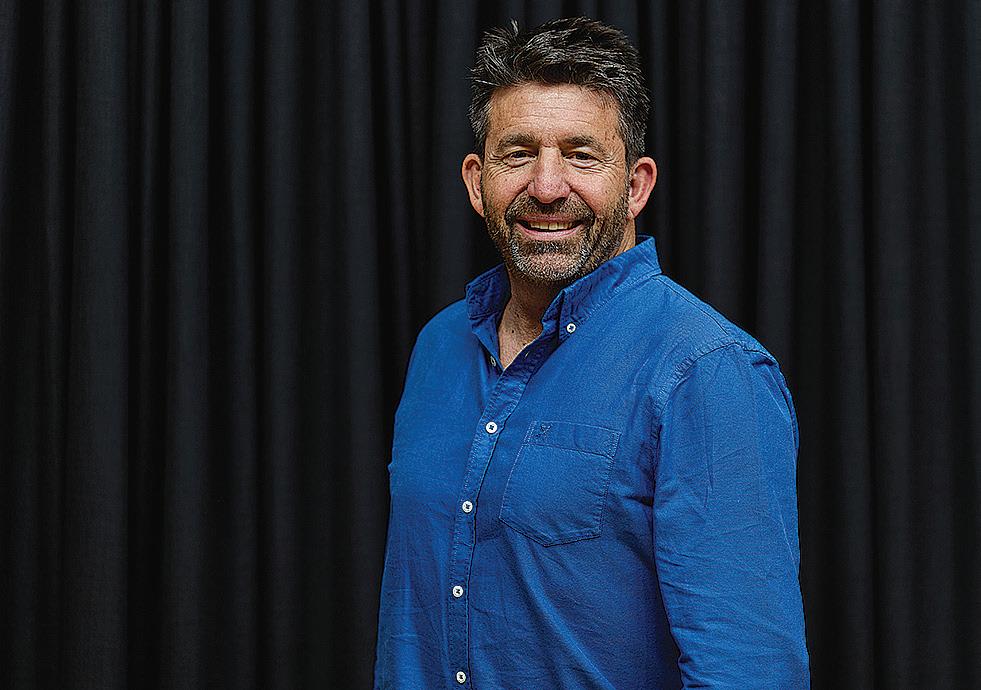
fact the conditions for lambing were better in the North Island and worse in the South Island where farmers there were hit by rain and snow in the middle of lambing.
The report carries some




commentary about some of the key happenings in the previous six months.
The Government gets a big ‘thank you’ for its moves to address the issue of large tracts of productive sheep and beef farmland being lost to carbon
farming, and pressing the pause button on freshwater farm plans.
The report draws attention to B+LNZ’s report on dealing with greenhouse gases which noted that NZ was out of step with how most other jurisdictions in the world deal with the issue. They want government to consider ‘practical approaches’ to dealing with the problem.
On the positive side, it calls out the value for our meat exporters of the UK/NZ FTA and the new deals with the UAE and the Gulf Cooperation Council.
And finally, and not surprisingly, the red meat sector is closely monitoring developments in the US as the Trump administration takes office. During his campaign Trump made references to increasing trade barriers, but both Thomson and Karapeeva say they are supporting the NZ government approach of ‘wait and see’.



THE ONGOING rise of the Chinese middle class will drag up demand for New Zealand products there in the future.
That’s how Director General of Ministry for Primary Industries (MPI) Ray Smith sees the situation, despite the fact that the Chinese market has been sluggish this past year with NZ red meat products in particular struggling to maintain earlier gains there. China is NZ’s second largest market for lamb and beef just
behind the EU and the USA respectively.
But in its latest report on the outlook for the primary sector, MPI is somewhat upbeat about the future. According to Smith, the stimulus packages being rolled out by the Chinese government will boost their economy. He also believes that lamb prices will rise as Australian supply to that market drops off in 2025.
“I am always optimistic about China but there is more competition there than in the past and
MPI TENDS to play a backroom role when it comes to new and ongoing trade deals.
Of particular interest to NZ is what are called non-tariff trade measures (NTM’s), which are technical rules and complex regulations that even a country with a free trade agreement with NZ may impose and which can interfere with the
we have to have a very good market presence to differentiate our product,” he says. “Why buy a NZ product as opposed to a South American one? is what people ask. That is why the MIA (Meat Industry Association) and MPI launched a programme there late last year to focus on grass-fed product,” he says.
Smith says it’s difficult when you are trading in commodities, competing against growth out of Argentina and Australia. He says NZ has to find niches in the market and
free flow of trade. Such measures are frustrating for NZ exporters and MPI Director General Ray Smith says one of his tasks this year is to try and unravel some of these impediments to trade.
He says he was recently in Malaysia trying hard to sort out one such problem, which has seen some meat exporters lose access to
get the best prices it can. He notes that in the past year, a lot of NZ product has been moved away from China and into the USA.
Also positive about the Chinese market is Trade Minister Todd McClay. He says the annual growth rate in China is around 5%, which he says means their growth is twice the size of the entire NZ economy.
“If I said to you there is a country out there that you can have a free trade deal with without restriction and it’s twice
that market.
“The only way to resolve such matters is by investing time and energy into personal relationships with our colleagues in international markets. It’s a matter of building that trust and confidence and opening a pathway for our technical people to get around the table and overcome the obstacles,” he says.


the size of NZ, we’d be jumping for joy and chomping at the bit. So, the opportunity in China there is half a billion
younger consumers that will spend more on food that has a good story behind it, is safe and high quality,” he says.
remains a lot of opportunities for NZ.













MECHANICAL
WEEDING is exploding in Europe because increasing resistance means they have “run out of herbicide road”, says Canterbury agronomist Charles Merfield.
He is exhorting New Zealand arable farmers to get into mechanical weeding now rather than wait until they too have no choice.
“You are far better off to get into mechanical weeding to protect the herbicides you currently have, to keep them going so you don’t lose them to resistance, and only have mechanical weeding as your option.
“Integrating mechanical weeding and herbicides is the smart thing to do now.”
The head of the Lincoln-based Future Farming Centre, Merfield was a speaker at the recent FAR CROPS Expo at the FAR research site at Chertsey, where attendees were given a demonstration of a newly-acquired mechanical spring-tine weeder.
Based on a show of hands, only a few attendees knew they already had herbicide resistant weeds on their properties, but Merfield said that, based on the genetics and the size of weed seed banks, everybody did.
“Even organic farmers have herbicide resistant weeds. They can’t find
them because they don’t use herbicides.”
Globally the problem of resistance continued to get worse, while the last new mode of action was the Acetolactate synthase (ALS) herbicides in 1983.
“We’re losing herbicides: to resistance, to legislation, and increasingly to customer demand. Your options are only going to decrease.
“The other way of diversifying your herbicides is to stop using them and start using mechanical weeders,”
“So we need to look after your chemicals. If you look after your chemicals, your chemicals can continue to look after and support you.”
The answer was diversification – of crops and rotations, and of herbicide types.
“The other way of diversifying your herbicides is to stop using them and start using mechanical weeders,” he said.
Merfield said it had been lonely for him “nerding on” about mechanical weeding for 30 years, but Europe was undergoing a revolution and all the big companies
were now offering mechanical weeders.
“The good news is this technology has improved in leaps and bounds.”
It also used to be complicated but was now generally standardised around a few basic methods.
The demonstration machine recently bought by FAR was a spring-tine weeder which Merfield said might be the best starter for an arable farmer.
As a contiguous weeder, it applies the same weeding action across the whole field surface, travelling at speed and covering a lot of ground quickly. Shallow rooted weed seedlings are simply uprooted while the more robust deeperdrilled crop plants might get knocked over but generally stand up again.
Farmers might then add a spoon weeder (or rotary hoe to Americans) or an Einboch Aerostar type. All were contiguous weeders but with different modes of action, so they complement each other.
Beyond that was interrow hoe weeders, which Merfield said were all now largely standardised to what he called a modular parallelogram design.
“What they are is more of a platform on which weeding tools are mounted. This means they’re hugely flexible. You basically choose the right tools for the crop,

the growth stage, for the wheat, for your soil, general conditions.”
With camera and GPS guidance systems, speeds of 10 to 20 km/h are

standard.
“If you’ve got something that’s 20 metres wide and you’re doing 20 km/h down a paddock, you’re covering ground, you’re not faffing around with this gear anymore.”
CHARLES MERFIELD also outlined studies he was undertaking into alternative means of dealing with fencelines, track verges and other uncropped areas.
He said the way we use herbicides to clear those areas – often repeat glyphosate – was abnormal internationally and illegal in Europe. With bare earth providing no competition from other plants, it encourages resistant weeds.
In Australia, resistant weeds developed in fence lines then jumped into crops, and that was now being seen here.
“This is no longer hypothetical stuff. This is occurring now in New Zealand. This is another herbicide resistance issue we need to get on top of.”
With fences being similar to vineyard structures, arable farmers could consider some of the weeders, mowers and cultivators developed for vineyards. There were challenges and problems in adapting them
There was also a “whole bunch of weeding tools now available”.
to arable farming.
“So, you don’t have to go the fancy robots with the lasers and stuff. This big stuff will weed the whole paddock. At speed.”
“But the bigger problem is generating herbicide resistant weeds in that space and having them jump into your crops.”
One approach being trialled is filling the uncropped areas with good plants instead than trying to clear the ground.
They are trialling a mixture of perennial brown top, which should do well with low nutrients; the perennial broadleaf garden alyssum for its flowers and nectar to support pollinator species and other beneficial insects that will control crop pests; and broom, for its early spring flowers that also supports pollinators.
“So, that’s what we’ve got as a demonstration trial, but it’s more food for thought for you guys to say, okay, we are doing regular herbiciding of our fence lines now, but what’s another thing we can do here? What’s an alternative?”

ARABLE GROWERS are being invited to supply samples of their harvested crops as part of a project which uses an alternative approach to determining how well they are managing their biggest input – fertiliser.
This follows a successful pilot for the 2024 harvest, initiated by the Foundation for Arable Research (FAR).
The idea started with a FAR grower group wanting to learn more about measuring and managing micronutrients to improve crop health and nutrient use efficiency, says FAR regional facilitator Donna Lill.
While growers
regularly measure nutrient inputs, such as nutrient levels in the soil to decide how much fertiliser to apply, they rarely measure nutrient outputs, Lill says.
Nutrient concentrations in harvested grain and seed show whether crops captured insufficient, adequate or excess amounts of each nutrient.
This enables growers to identify fertiliser overuse, potential savings and diagnose deficiencies.
“Growers who submitted samples were interested to understand how effective their existing fertiliser programmes were, as well as learning about
nutrient uptake.
“It is not intended to replace soil or other tests, but is another piece of the puzzle. It’s a post-mortem that provides results of previous management to influence future management.”
Last year, 50 growers from throughout New Zealand submitted 126 grain samples which were analysed by Yield Enhancement Network (YEN) in the United Kingdom. Through YEN, crop samples are analysed for 12 macro and micro nutrients. As well as nitrogen (N), phosphorus (P) and potassium (K), these also include magnesium (Mg), calcium (Ca) and boron (B).
Growers receive two reports, a nutrient off-take report and a nutrient benchmarking report. The nutrient off-take report gives an accurate assessment of nutrients removed from the paddock, allowing growers to manage soil nutrient status and applications for following crops.
The benchmarking report compares grain nutrient concentrations against thresholds for each nutrient, indicating whether the crop had sufficient or a deficit in relation to yield.
Samples from the 2024 harvest showed very few deficiencies.
“This is only one year
of data and we do expect seasonal variations,” Lill says.
“The benefit of working with YEN UK is they have the systems and database. They also have the knowledge around benchmarking and the critical levels for different nutrients. There may be differences between the UK and New Zealand but it is a starting point.”

To be involved, growers need to collect a grain or seed sample at harvest and provide some paddock information. Growers can submit samples of cereals, oilseed rape, linseed and peas. This year, these will be analysed in New Zealand at Hill Laboratories rather than being shipped to the UK. The results will then be sent to YEN UK for nutrient analysis and benchmarking.
Testing of other crops may be possible if there is enough interest from growers. Hill Labs’ samples submitted via the YEN-NZ programme will cost growers $102 a sample. FAR and the Fertiliser Association of NZ are covering the cost of data analysis and reporting from YEN for 2025 harvest samples. For more information or to submit a sample, contact FAR.






DAIRY FARMERS will be breathing easier thanks to the Government last month delivering a Christmas gift in the form of immigration reforms.
For years, Federated Farmers has been pushing for changes to the Accredited Employer Work Visa scheme on behalf of farmers desperate for migrant workers to ease acute staff shortages on farm. Getting visa approval for an accredited employer to recruit a migrant dairy farm worker is taking up to six months.
For dairy farmers, the crux of the problem has been the type and format of information required by Immigration NZ and the time officials are taking to process applications.
Feds have been pushing for a simpler process and greater recognition for accredited employers.
And it was Immigration Minister Erica Stanford who really delivered for farmers last Christmas.
The critical changes to the Accredited Employer Work Visa settings include:
• Removing the requirement to pay new migrant staff at least the median wage ($31.61/ hour).
This hardly made sense, paying what are essentially entry-level farming staff the median wage, particularly when that’s more than what a Kiwi in the same role would be earning. All that did was inflate the wage bill for farmers who were already under huge pressure, desperate to find staff, and couldn’t find any suitable Kiwis who wanted to do the work.
• Extending the duration of visas for ANZSCO level 4 or 5 roles to three years, up from two years, plus a one-year extension; a shift Federated Farmers had specifically requested.
This means a staff member can stay in the country for three years on one single visa, instead of needing two visas by the time you apply for the one-year extension. For farmer employers this will cut thousands of dollars in costs for farmers.
DairyNZ data shows that 16% of farms didn’t have enough staff to meet their needs.
The Government’s changes will make it easier for the dairy sector to attract good overseas workers and ease the staff shortage while helping to create a pathway for these migrants. It’s a win-win situation.
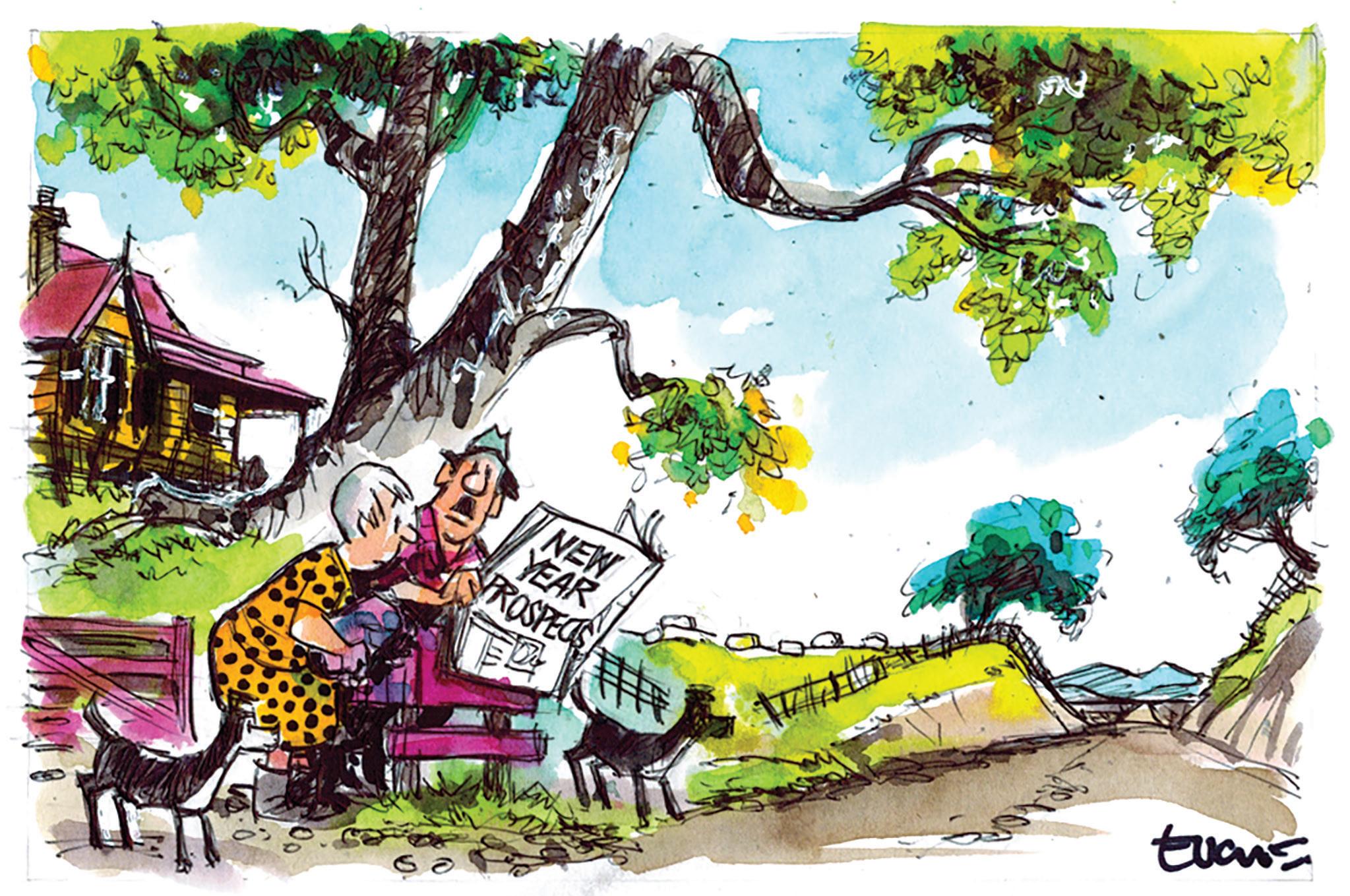
“The banks say net confidence is up – we haven’t got a net!”
THE DEATH of Dame Tariana
Turia is a loss for the country and a reminder of how far the quality of politician has fallen in the party she founded. In contrast to the circus that the Māori Party has become, Turia put results before grandstanding, working with whoever was in power. Now we have divisive politics, threats of violence, and as Winston Peters claims, “economic sabotage”, the party allegedly sending a letter to all companies who applied for fast-track consideration, trying to undermine investment confidence.
“If true, they have shown what extremist economic morons they are and how little they value the future of our country,” he says.
“They have threatened these private companies with economic sabotage and condemning NZ to a bankrupt future - all because of their delusional and separatist views.”

FINANCE MINISTER Nicola Willis has targeted cuts in the public service to balance the books, particularly the spend on consultants, drawing trenchant criticism from… consultants. The Hound notes Willis set the public service a target of eliminating $400 million in operating expenditure on contractors and consultants by 2024/25. In 2023/24 savings of $274 million were achieved. Last year the public service was on track, after the first quarter, to achieve savings of about $500 million - savings forecast to continue over the next three quarters, which means savings over the two-year period could total more than $800 million. It shows operational expenditure by departments on contractors and consultants fell a further 46% in the September quarter on an annualised basis. Great news, unless you’re an overpaid consultant!
PRODUCTION: David Ferguson Ph 027 272 5372 davef@ruralnews.co.nz
Becky Williams Ph 021 100 4381 beckyw@ruralnews.co.nz
HEAD OFFICE POSTAL ADDRESS:
PO Box 331100, Takapuna, Auckland 0740
Phone 09-307 0399
PUBLISHER: Brian Hight Ph 09 307 0399
GENERAL MANAGER: Adam Fricker Ph 021-842 226
EDITOR: Sudesh Kissun Ph 021-963 177 sudeshk@ruralnews.co.nz
REPORTERS: Peter Burke Ph 021 224 2184 peterb@ruralnews.co.nz
Nigel Malthus Ph 021-164 4258
MACHINERY EDITOR: Mark Daniel Ph 021 906 723 markd@ruralnews.co.nz
IT DIVIDES opinion, but the House has passed the first reading of the Gene Technology Bill. No working groups, just getting on with it, finally. Judith Collins says our current regulations for genetically modified organisms are some of the “most backward looking in the world”. Countries, such as Australia, Canada, and England have safely used these technologies for the benefit of their economies. Gene technologies having been in use in New Zealand since the 1970s, the restrictive rules and time-consuming processes we have imposed on researchers have made testing and innovating outside the lab all but impossible. Collins says she’s listened to our research, primary industry, and medical communities and the frustrations that they have felt over many years. GE critics remain, but supporters will see this as a win for science over hysteria.
AUCKLAND SALES CONTACT: Stephen Pollard Ph 021 963 166 stephenp@ruralnews.co.nz
WAIKATO & WELLINGTON SALES CONTACT: Lisa Wise Ph 027 369 9218 lisaw@ruralnews.co.nz
Want to share your opinion or gossip with the Hound? Send your emails to: hound@ruralnews.co.nz
THE END-OF-YEAR booze-up at the posh Northern Club in Auckland must have been a beauty, as the legal ‘elite’ let their hair down and showed us how entitled and political some in the judiciary really are. A district court judge and her boyfriend were forced to apologise for “verbally attacking” Winston Peters and other NZ First members at a party. Judge Ema Aitken and Labouraligned health specialist David Galler were on the vino with other judges at the exclusive Club when they gate-crashed a private function. It’s alleged Aitken tried to enter the room and shouted at the Deputy PM: “He’s lying! How can you let him say that?” Galler arrived soon after and reportedly “blocked [Peters’] exit” and told him the government was doing a “shit job”. So much for impartiality and comity!
SOUTH ISLAND SALES CONTACT: Kaye Sutherland Ph 021 221 1994 kayes@ruralnews.co.nz
DIGITAL STRATEGIST: Jessica Marshall Ph 021 0232 6446


IN TWELVE months’ time, plus or minus, we’ll be in the same place, give or take, and thinking the same things, more or less.
The exact date, geographical location, bank balance, schedules, milk price and ideas might have changed a bit, but overall, for most people, we’ll still be ‘here’ and doing our best.
Doing our best means looking for ways that we can achieve improvements all the time. This fits with New Year resolutions for most people. We’re going to get fitter, lose weight, eat in a healthier fashion, be kinder to those around us, find ways to save more money, spend more time with friends and family… Generally, our intention is to improve.
For most people, good intentions about diet and exercise evaporate in the face of the reallife pressures of work. The energy that it takes to make the change is expended in the business of generating income. And farming, in the words of Colleen McCullough (admittedly writing about Australia), takes energy and devotion.
This energy and devotion, focused as it has been on the land, is part of what has given New Zealand the agricultural edge. Everybody in New

Zealand has benefitted and will continue to benefit in the future. The economic recovery predicted for 2025 has already been hung on the rural sector.
At the end of last year, Susan Edmonds from RNZ talked with several economists on the topic of ‘survive until 2025 –and now what?’
Chief economist at Westpac, Kelly Eckhold, responded that regional New Zealand would probably feel the recovery first: “The strong milk payout combined with less cost pressure for farmers would be good for agriculture and regional economies”.
Mike Jones of BNZ also pointed to dairy incomes as a building block for improved economic performance.
Brad Olsen, Infometrics chief economist agreed. “Regions have got a very good milk payout coming through that will
add billions more than originally expected into the economy in terms of spending.” Add meat and horticulture and “all those factors combined suggest regions might help lead the recovery as we head through to next year”.
News of overseas trends is also encouraging. Meat is regaining popularity and plant-based ‘milks’ aren’t quite what was first thought.
The meat announcements reflect a desire for fresh food and an increasing distrust of ultra-processed foods.
Just after Christmas the headline “New research links plant-based meat to depression” appeared based on research from the University of Surrey. Reading the actual research (published in Food Frontiers), rather than the press release, the evidence is about markers in vegetarian volunteers, and careful use of the word ‘might’. The research conclusion was that “while no clear health risks or benefits were associated with plantbased meat alternatives (PBMA) consumption in vegetarians, the higher risk of depression, elevated CRP (C-reactive protein), and lower apolipoprotein A levels in PBMA consumers suggest
TO MANY farmers, the banks are not flavour of the month. What annoys me is their trying to impose emission targets on us.
Firstly, I don’t consider it is any of their damn business what emissions we may produce. I would have thought that making profits for their shareholders is very much their business. If they want to save the world, then politics is the place to do it, not by bullying their customers into doing what they think we should do.
Farmers don’t tell them how to run their businesses, although I personally could think of a few ways they could make life better for us!
The claim is that they are trying to protect market access for us. That is the job of politicians, exporters and diplomats, not the banks. It is simply none of their business.
If every other supplier of our farm services starts to dictate how we do our job, then life would be impossible. To top it off, the measurement of agricultural emissions is very inexact, especially with methane where the equivalence with carbon dioxide is still being debated. The targets the banks are trying to impose are of based on out of date or incomplete science.
L R Brown Outram
potential inflammatory concerns that warrant further investigation”.
More research is necessary…
The headline ‘might’ be enough to put people off large intakes of PBMA, though different reports have suggested that price and lack of flavour and texture have already had a negative impact.
Another headline in favour of real food appeared just before
Christmas: “Does processing reduce nutrients in plant-based milks?” The actual research (published in Food Research International) reported that “essential amino acid (EAA) levels were found lower in all plantbased milk alternatives (PBMAs), impacting their nutritional quality”. The ‘milks’ were examined for products from the Maillard reaction which decreases nutritional availability and can result in acrylamide (a known human carcinogen). They detected acrylamide in almond and some of the oat drink samples, ‘likely due to the roasting of the raw materials in the production of these drinks’.
Again, the researchers stated that their research was not exhaustive, and
more is required. They assured the readers that regulatory bodies set safety guidelines but warned that “gaps exist in the application of these regulations to emerging food technologies and novel ingredients”.
Food safety and quality assurance in New Zealand is high, so the alerts on plantbased alternatives to natural foods are simply increasing awareness. But overseas, they are being taken seriously.
Overall, the global trends are towards the protein and natural foods that New Zealand produces.
This means that the auguries are good.
The fact that the economists are supporting our role is also extremely important.
Kelly Eckhold has said
that “The most positive thing for the economy is the primary sector...”
This is the message to keep hammering to all policy makers whether in national or local government.
In 12 months’ time they will or won’t have listened and might or might not be still in office. But the rural sector will have gone on producing excellent food, doing its best to ‘do better’ whilst knowing that the future is here and now.
• Dr Jacqueline Rowarth, Adjunct Professor Lincoln University, has an honours degree in Environmental agriculture, a PhD in Soil Science and is on the board of directors of DairyNZ, Deer Industry NZ and Ravensdown.


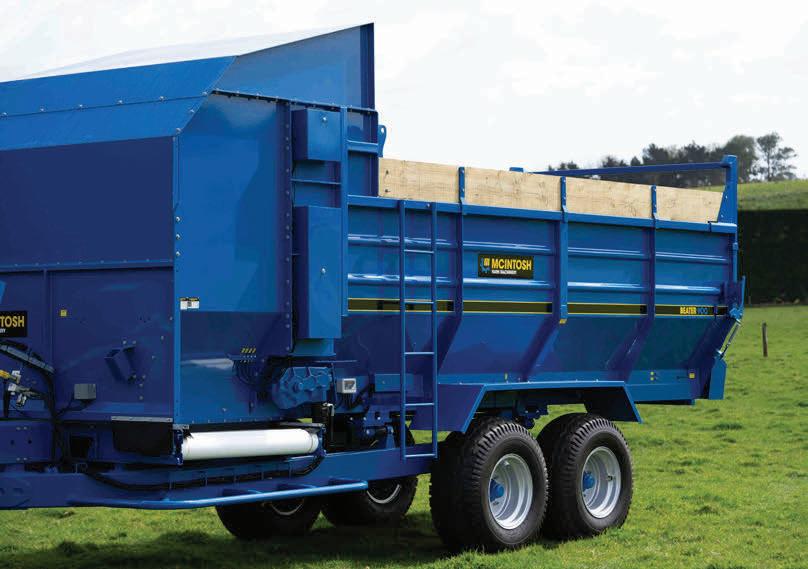


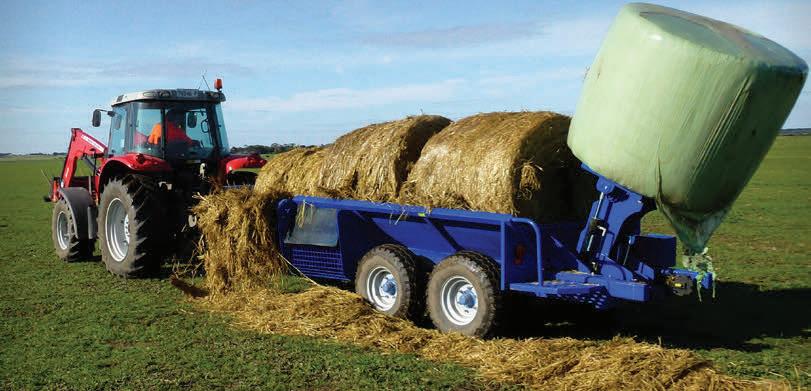


HOGGARD
ANDREW
IN THE last few weeks of 2024 there was a lot of noise in the UK and Europe about the methane inhibitor, Bovaer, and concerns raised as to its safety.
I have received several emails and lots of questions on social
media. For two reasons, I guess: Firstly and most importantly because I’m the Minister of Food Safety and it is my job to ensure that anything that goes into our food system is safe in terms of ensuring that there are no residues left in products that are above safe levels. Secondly, I

think people know I’m a farmer myself, so will undoubtedly have an opinion. So, regarding food safety, I can tell you we have a very robust system under the Agricultural Compounds and Veterinary Medicines Act that regulates and ensures compounds used
in our farming systems will not leave residues in our finished products that could, in turn, cause issues in the marketplace. Many manufacturers would probably argue that they are too robust, as evidenced by the recent Ministry for Regulation review into the agchem regulatory
system.
The use of methane inhibitors will fall under this system. Before a methane inhibitor can be sold, it must be approved under the ACVM Act.
Its key function is to ensure that any residues that appear are below the acceptable limits set in international

FLAT DECK TANDEM AXLE ROAD TRAILER
We have a strong reputation for building robust trailers than can take a lot of punishment. Our flat deck road trailers are constructed from quality galvanised steel, heavy duty components and road ready. Completed with sides, front and rear tailgates, braked jockey wheel, lights and fittings, WOF and rego. Crates available and customised to the size you want.

WELLSIDE TANDEM AXLE ROAD TRAILER
Our tandem road trailers are braked with tread plate alloys sides and heavy duty construction. Includes lights and fittings, jockey wheel, WOF and rego. Crates available. Custom made to your specificiations and size.

5-40 tonne
10 year warranty
• Available assembled and installed or kitset
• Book in now for winter
supply, install and service new and existing meal and molasses feed systems and also roller mill systems.
standards, or by the importing country if they have stricter limits. Then as we found out with DCD, even when something can be proven safe, if it has a residue. If there is no residue amount stipulated, then the accepted amount is zero. As far as I’m aware, Bovaer is focused on housed livestock systems and isn’t currently in a form that would be practical for use in New Zealand, given we are mostly pasture based (grass fed) systems. So, it isn’t currently seeking approval for use here in New Zealand.
It shouldn’t be the role of the Food Safety Minister to make value judgements, or marketing decisions. I get the sense from some of the questions directed my way, and some of the debate on this subject, that people would like this to be the role. I think that would be an incredibly bad precedent on several fronts, and I think the same would apply to the GE debate.
I fundamentally believe that government should restrict its role to the minimum required. In this case there is a simple role government plays in ensuring that food is safe, and we have international standards that are set.
The Government’s role is to certify that those standards are met to ensure food is safe and trade can go ahead. The discussion about whether or not food should be marketed in a certain way, or certain products shouldn’t be used due to issues around perception, is a decision for food companies, and ultimately farmers to decide.
The companies are the ones who have the relationship with customers and can differentiate between serious customer resistance and a noisy, irrelevant minority. You should not want government to be involved in that, because if government has a say in this one, then on a principal basis how could we argue against government having a say in what other sort of things we use or do on
farm, based on what they think a consumer wants, like nitrogen fertiliser, or herbicides? Just look at the EU green deal as an example of when politicians think they should tell farmers how to farm.
The second reason why government inserting itself into this is a bad idea, is that it would send a chilling effect to those companies wanting to bring products to New Zealand. This could see our government making emotion based instead of science-based decisions on what to allow and what not to allow.
I believe this would lead to companies questioning whether to bring products of any type to NZ. We are a tiny little market, and it’s already questionable on whether to invest in new products for our market. Government intervention based on emotion would make it more questionable, and farmers and growers could well miss out on the latest tech.
Finally, as a farmer, what’s my view on methane inhibitors? Personally, I want to be assured that they will not have any unintended consequences, on either food safety or animal welfare. I want to know that they work, and they would need to fit in with my farming system with minimal extra hassle. They would also need to stack up financially. If the market doesn’t really value it, then what’s the point?
So, I would like the option to be available for me to use a methane inhibitor on farm and if I can see a benefit in using them and they meet those assurances set by science, then as far as I’m concerned, it’s clearly an option for me. Now some may get upset by me saying this, but at end of the day, in this paragraph I’m talking about my farm not anyone else’s, and I’m pretty sure we can all agree that we would all like a little less of other people telling us what to do on our own farms.
• Andrew Hoggard is the Assistant Minister for Agriculture and Minister for Food Safety.
WITH LOW wool prices, farmer interest in the self-shedding Wiltshire sheep continues to grow.
This was manifest by the large turnout at a recent field day held at Massey University’s Riverside Research farm in the Wairarapa where trials are being done to quantify the benefits and costs of breeding up a self-shedding Wiltshire flock.
Heading up the six-year trial is Professor Steve Morris who says he was very happy with the turnout for the day, and ongoing interest in the trial – now in its fourth year.
He says the key purpose is to get quantifiable data on the impacts of breeding a Wiltshire flock.
The trial involves crossing Romney ewes with a Wiltshire ram and continuing this process until the resulting progeny are fifteen sixteenths, at which point they are classed as pure Wiltshires.
He says getting funding for the sixyear research programme has not been easy given the fact that people want answers tomorrow, if not yesterday. But he says the way the trial is working out, there will be a ready supply of hard data to give serious options for farmers who are getting little or nothing for their wool.
He says on a North Island hill country class four property, the income from wool is 3% or less.
“If you’re a farmer with say 4000 ewes and your wool shed is deteriorating, there is a question mark about whether it is economic to build a new one, given the money they are
getting for their wool. The cost of labour and finding it in rural areas is also a factor, especially if the tasks are dagging, dipping and shearing,” says Morris.
As well as the self-shedding aspect, the trial is looking at all other aspects of the Wiltshire such as its reproductive performance, lambing and its carcass yield. To date there is little difference in liveweights in any of the crosses, and reproductive performance was not lower in Wiltshire crosses (and there is some evidence of increased lamb survival).
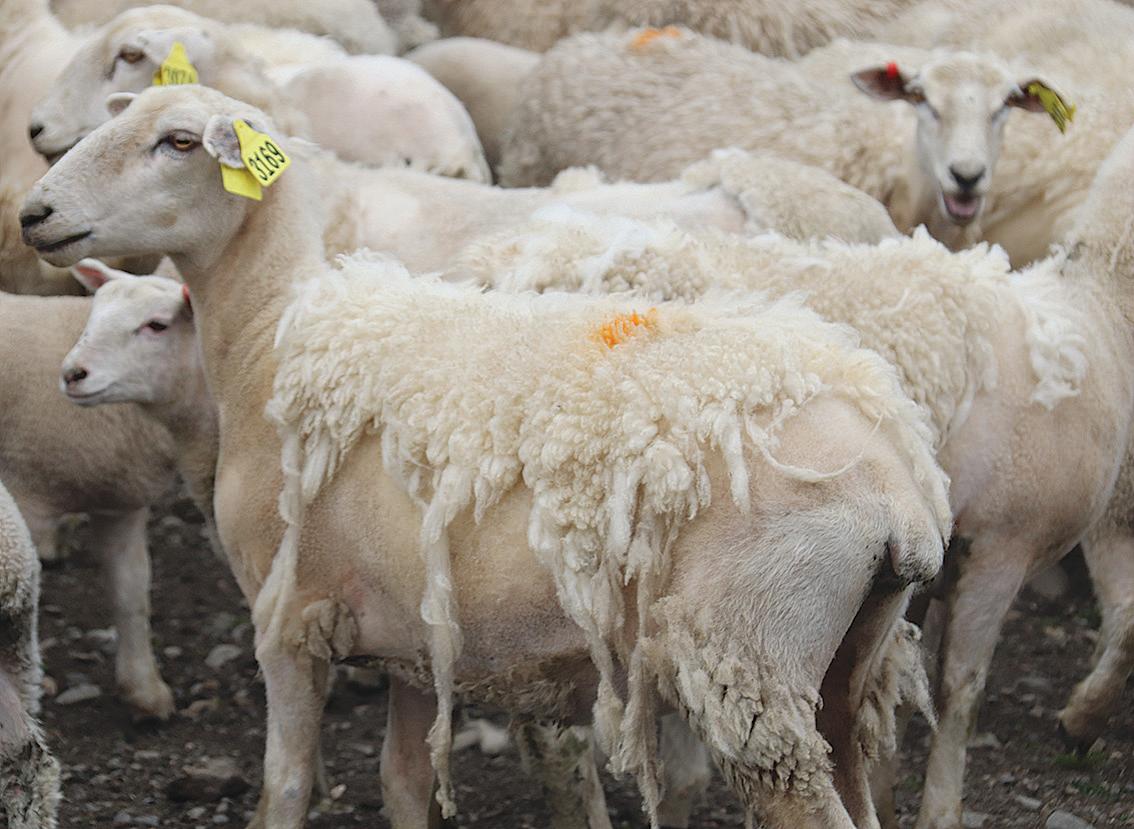
Data shows the need to wait to late January to do shedding score in lambs with increased shedding in 3/4 and 7/8 cross, as expected. Morris notes that their preliminary data indicates that Wiltshire-cross lambs were able to produce equal amounts of meat of similar quality to Romney lambs and had higher dressing out percentages.
“I would make the comment that if the performance of these Wiltshire is same as other sheep on farms, that’s fine. From what we have deduced so far, the flock performance of the sheep, in terms of reproduction, growth rate, carcass conformation, is as good and in some cases better that other flocks.”
Morris says at the field days there were farmers who had been breeding Wiltshire for many years, others who had been doing so for a few years, and then there are those who are just starting to get interested. The trial is funded by L. A. Alexander Trust, the Massey Foundation and the Sydney Campbell Trust through to the end of 2026.



THE ROLLOUT of the New Zealand Genetic Evaluation Version 6 is said to mark a step-change in the depth and breadth of genetic information available to both stud and commercial sheep breeders.
For ram breeders, this iteration of the New Zealand Genetic Evaluation (the genetic analysis machinery behind Beef + Lamb New Zealand’s nProve system) generates even more accurate information that, through nProve, helps their commercial clients as they strive to improve the productivity and profitability of their sheep flocks.
New Zealand Genetic Evaluation Version 6 (NZGEv6) builds on the genetic tools that have made a significant contribution to the New Zealand’s sheep industry’s productivity gains.
Dr Jason Archer, Beef + Lamb New Zealand’s head of genetics, says the

■ Ideal for shearing sheep, alpacas, goats and cow tail.
■ Variable speed from 2600-3500rpm.
■ Latest brushless motor technology means minimal heat build up
■ 1400gms means 100-200gms lighter than standard handpiece
■ At 2800rpm the 12v lithium battery will trim up to 400-500 cows tails or crutch 300-400 sheep
■ We customise cables for lifestyle shearers.
GET YOUR REPAIRS & SERVICE DONE ASAP!
View in action go to www.handypiece.co.nz Freephone 0800 474 327 email: dave@handypiece.co.nz


The New Zealand Genetic Evaluation Version 6 (NZGEv6) builds on the genetic tools that have made a significant contribution to the New Zealand’s sheep industry’s productivity gains.
“It has been estimated that genetics has driven 51% of the spectacular gains made in our sheep industry over the past 35 years, despite sheep farming being pushed further into more marginal country.
NZGEv6 will help ensure this momentum continues and farmers can continue to breed sheep that perform in an
increasingly challenging environment.”
Archer says farmers are farming with more extreme weather, widespread drench resistance, labour shortages, environmental responsibility, the spread of facial eczema as well as the vagaries of the market.
When combined with the power of measurement and management, genetics can help improve growth, reproduction, ewe constitution and body condition, reduce dags, parasite burdens and the impact of facial eczema.
NZGEv6 introduces new capabilities to better support breeding decisions.
Archer says the upgrade was undertaken
so new technologies, including a broader application of genomics and improved ability to deal with new traits, could be incorporated into the NZGE.
He says B+LNZ’s Genetics Science Team has undertaken a huge amount of work to overcome the limitations in previous versions and are rolling out an upgraded NZGEv6 to better serve the industry’s needs.
“Genetics has traditionally focused on improving production on-farm, but breeders are increasingly incorporating environmental outcomes, better animal welfare and an improved eating experience for consumers in their genetic packages.”
JASON ARCHER says NZGEv6 is part of B+LNZ’s on-going commitment to delivering world-class genetic tools to New Zealand sheep farmers.
He says the tool is a paradigm shift for stud breeders and supports their adoption of new genetic technologies such as genotyping.
Archer says it has been 25 years since Sheep Improvement Ltd (SIL) was formed. The first iteration of the NZGE, known as SIL-ACE, and the first acrossflock evaluation was carried out in 2006.
Genomics began to be incorporated into SIL in 2017 starting with multi-step evaluation and this moved to a single-

NZGEv6 will build on NZGE’s current capability which evaluates over 11 million animals each week and incorporates over 160,000 genotypes. The updated version will have the ability to include millions of genotypes in a single evaluation.
A claimed benefit of NZGEv6 is its ability to include genotypes from diverse breeds in a single evaluation, eliminating the need for separate Maternal and Terminal evaluations.
Archer says when larger supersets of 450,000 genotypes can be combined in NZGEv6, they see greater accuracy. This allows the more effective use of all available data.
“NZGEv6 puts us on a path to potentially allow for future genotyping of a wider range of breeds, such as shedding sheep and other emerging breeds.”
step evaluation a year later.
He says NZ sheep breeders are renowned for being fast adopters of tools that will help drive productivity, profitability and improve animal welfare. This has been reflected in their use of performance recording and the adoption of technologies such as genotyping.
Those breeders who have been using genotyping technology are generally making more rapid genetic progress and have higher-than-average breeding indexes, ultimately meaning more money for the commercial farmers using their genetics.
He says NZGEv6 is also far better at handling new or less commonly measured traits such as meat quality, facial eczema or methane where there is only limited data available for genetic analysis relative to other traits. This means farmers will be able to effectively incorporate these traits into their breeding objectives, even when data is limited.
MARK DANIEL
markd@ruralnews.co.nz
ANNOUNCED AT the end of year at the EIMA 2024 Event in Bologna, Italy, the Case IH Quadtrac 715 - the new flagship model in the Case IH tractor range - has won the Tractor of the Year 2025 High-Power Category for models of 300-plus horsepower.
The latest Quadtrac development features a heavy-duty mechanical suspension with hydraulic cushioning, bringing additional comfort and productivity benefits to all MY2025 models.
Bigger drive wheels maximise power transmission and provide more lug engagement, while a larger footprint boosts traction and reduces soil compaction. This is complemented by double-axis midrollers that equalise pressure across each track, eliminating point loading.
Greater comfort allows operation at higher field speeds, enhancing work rates, while service time is minimised through automatic track tensioning, the elimination of undercarriage greasing points, clear-view oil caps
and maintenance-free bushings and pins.
The pan-European judging panel of 25 farm machinery journalists based their assessments on areas including engine performance, fuel efficiency and emission standards, transmission smoothness and reliability.
The new Quadtrac 715 features an FPT Cursor 16 TST twin-stage, turbocharged engine, producing 778hp at 1900 rpm and maximum torque of 3356Nm at 1400rpm, with maintenance-free after-treatment to meet Stage V emissions regulations.
A PowerDrive powershift transmission minimises torque loss, while a multi-controllermounted, right-hand power-shuttle switch controls driving direction in combination with a left-hand steering column-mounted shuttle.
Other innovations on the latest Quadtrac include configurable buttons allowing operators to set up controls to suit preferences, AccuTurn – a fully automatic headland turn system, an automatic trailed implement steering lock to
MOSTLY ASSOCIATED with conventional tractor tyres, Indian tyre manufacturer Ceat is reported to have bought the Camso off-highway tyre and track business from Michelin for about US$225 million (NZ$400 million).
The deal gives Ceat global ownership of the Camso brand, which currently enjoys a strong position with its materials handling tyres, tractor and harvester tyres and tracks in both Europe and North America.
As well as widening its product base, the deal is also said to offer Ceat access to a global customer base of more than 40 international OEMs, including all the major brands and distributors.
While there was no mention of the deal at the recent Italian EIMA show in Bologna, Ceat management did talk

prevent damage when reversing, and up to 428 l/min of oil flow to match demanding implements.
Comfort and convenience features include automatic pivoting steps and 76,620 lumens total output from a new lighting package. The new Quadtrac 715 also features AccuGuide
of ambitious plans to grow its rubber track business to become a global player in the high margin off-highway segment, particularly with tractors and combines in Europe and North America.
Prior to the deal, the Indian manufacturer’s rubber track portfolio was limited to only two tractor and two harvester track offerings. It’s two plants making rubber tracks in Bombay will soon to be bolstered by the two Camso plants in Sri Lanka.
Michelin acquired Camso in 2018. In 2023, the Canadian-based company achieved revenues of approx. US$213 million (NZ$380 million), with the proposed deal subject to regulatory approvals from the relevant authorities.
auto-steering and works with the new Case IH FieldOps monitoring and management app.
“We’re pleased to see this recognition of our engineering team’s hard work in devising new capabilities for the Quadtrac that support large farm enterprises,” said Marco Lombardi, head of Case IH and STEYR brands EMEA.
“This is the most productive tractor Case IH has ever built, providing new levels of power, traction and hydraulic output that will help owners do more in less time and so drive down the total cost of ownership.”



MARK DANIEL markd@ruralnews.co.nz
WHILE THE LDV brand has been available in New Zealand for a number of years, it’s typically been recognised as a second tier offering. That has started to change after distribution passed to the Inchcape Group in 2023, who are on a trajectory to improve that public perspective, and in due course, push sales upwards.
The pre-Christmas launch of the new LDV T60 ute offers a glimpse of where things are heading, with the likes of a new front bumper and grille, fully optioned side-view mirrors with heating and auto-folding, LED DRL and auto-dipping headlights and new 18-inch wheels.
To understand the moves to get better customer recognition, it’s necessary to take a step back and take note of the 7-year/200,000km warrant - up from the current 5-year/130,000km offering - alongside 7-year complementary WOF inspections, including all vehicles registered in MY-2024.
Power, as in the current models,
is delivered via the same 2-litre, twin-turbo diesel to offer 160kW and 500Nm peak torque. An 8-speed transmission, sourced from ZF, is complemented by an on-demand 4WD system, combining to offer a 3000kg towing capacity.
Priced at a competitive $55,990, the new T60 Max Plus, the new ute, compares with current $50,000 Lux and $47,000 Elite versions, which will take the new look in the not-so-distant future.
Elsewhere, further upgrades include keyless entry and push button start, a lockable tailgate, auto wipers, auto headlights with automatic high-beam selection, front and rear parking sensors, and a surround view camera system.
In the cabin, leather accentuated upholstery features contrast stitching, with comfortable seats offering heating and power adjustment, alongside a heated steering wheel that is always welcomed.
Shift selection is via a column mounted control, while the infotainment package takes the form of twin 12.5-inch-wide screens, housed

within a single full-width frame. Moving to functionality, the rear tub includes a spray-on liner for durability, with four tie-down points.



Tackling difficult terrain should be a breeze, with standard equipment including Hill Descent and Hill Start assist functions, stability and traction
control, with an on-demand, rear locking differential. The new LDV T60 Max Plus is available for purchase from mid-January 2025.


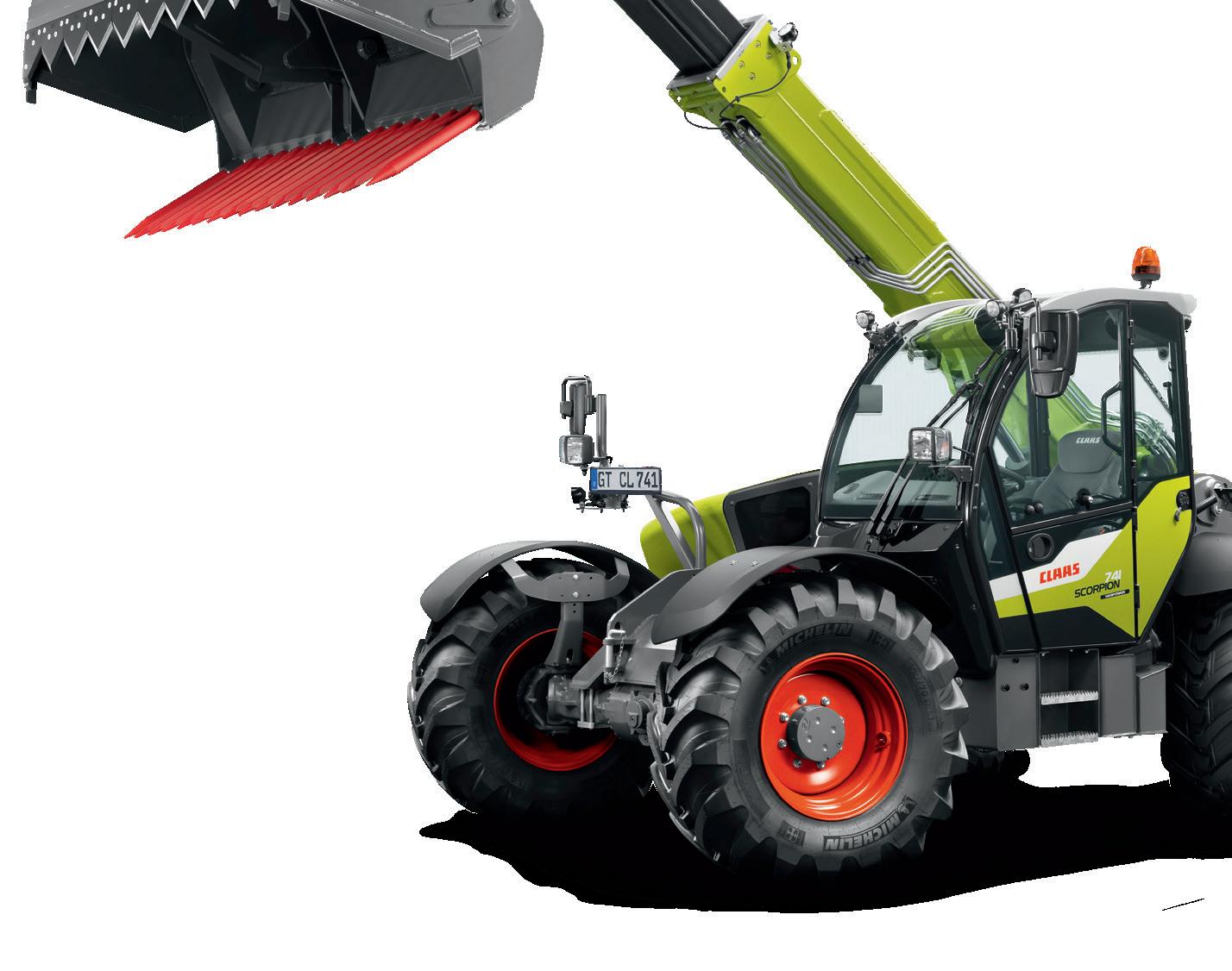




DESPITE CONDITIONS in the farm machinery industry, which can only be described as difficult, the Germanheadquartered Claas Group has reported net sales of €5 billion for the 2024 financial, around €1.1 billion, or 19% lower than the corresponding period in 2023.
A company spokesperson says tight producer prices, elevated interest rates, extreme weather conditions and geopolitical tensions have all combined to elevate
levels of uncertainty, meaning farmers and contractors have been hesitant in buying new tractors and machinery.
Despite the drop in sales, the business has successfully navigated a tough 2024 fiscal year, ending on September 30, delivering an operating profit before depreciation of €584 million compared to €769 million in 2023, alongside a net income of €253 million, against €347 million in the previous year.
“We have performed well in the highly competitive agricultural machinery market,”

says CFO Henner Böttcher. “Despite a significant decline in sales, our strong earnings demonstrate our resilience. Today, it is paying off that we adapted our structures and processes early, amid a phase of high market dynamics and increasing geopolitical uncertainties.”
Claas chief executive officer Jan-Hendrik Mohr says that the business has remained on course and managed costs efficiently, while also proactively advancing the business.
“We have again increased our R&D
expenditure to over €330 million and made targeted investments in future projects, new technologies and our production network to ensure sustainable growth and drive innovation.”
Targeted investments in the production network have seen modernisation work currently taking place at several Claas plants. At Bad Salgau (forage harvesting technology) in Germany, the infrastructure and production facilities have been updated to facilitate the expanded product
portfolio, and expand production capacities. The Harsewinkel plant (combine harvesters, forage harvesters and Xerion tractors) will be modernised with more automated systems soon.
Looking ahead, Claas says that the current industry trend of reduced investments by farmers, most of whom have seen producer prices fall sharply, suggest that with no upward trend currently in sight, a moderate decline in sales for 2025 and a noticeable decline in income before taxes is expected.
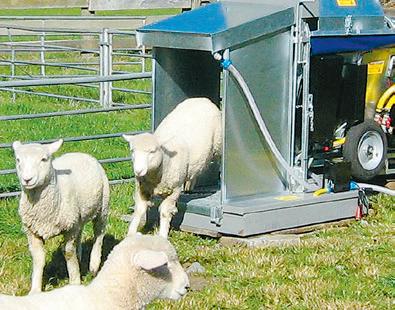








2024
KAIAHUONE RANGATAHI O TE TAU
FROM GRAND FINAL HELD 30 & 31 OCTOBER, KARAKA, AUCKLAND
WOOLWORTHS INNOVATION PROJECT
1st Prize Kyla Mathewson
2nd Prize Anna England
3rd Prize Taylor Leabourn
OTHER AWARDS
T&G Fresh Practical Components Craig Scott
Winner Anna England
Runner Up Kyla Mathewson
3rd Place Craig Scott OVERALL
Fruitfed Supplies Leadership Taylor Leabourn
Woolworths Best in Sector Craig Scott
Bayer Best Practice Kyla Mathewson
Horticentre Trust Sustainability award Taylor Leabourn
Craigmore Sustainables Best Speech Taylor Leabourn










